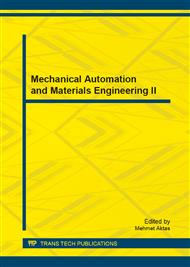p.296
p.303
p.308
p.312
p.317
p.321
p.329
p.334
p.339
Experiments and Evaluation of Body Pressure Distribution on Wheelchair Cushion
Abstract:
To study the relationship between wheelchair cushion shape and seat cushion comfort. By measuring sitting pressure distributions on wheelchair cushions with different shape, indices of sitting pressure such as the contact area, maximum sitting pressure were discussed along with method for subjective evaluation and objective test combination to analyze the relationship between seat cushion shape and seat cushion comfort. The experimental results from subjective assessment on three kinds of seat cushion indicate that the cushion shape is an important factor affecting seating comfort .The experimental results from objective assessment indicate that the contact area and maximum sitting pressure can preferably reflect the comfort of seat cushion and be used to evaluate the comfort of seat cushion.
Info:
Periodical:
Pages:
317-320
Citation:
Online since:
June 2014
Authors:
Price:
Сopyright:
© 2014 Trans Tech Publications Ltd. All Rights Reserved
Share:
Citation:


